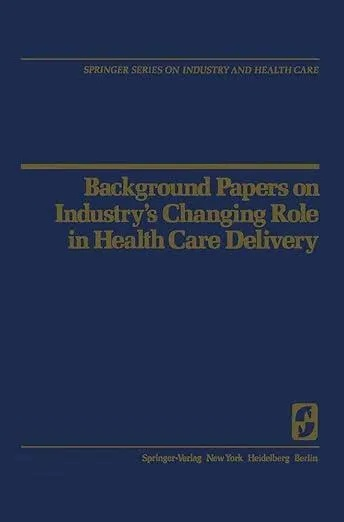The Revolutionary Role of Biomedical Textiles in Healthcare
Biomedical textiles, also known as biocomposites or biomaterials, are materials that have been engineered to mimic the properties of living organisms for use in medical applications. These materials have gained significant attention due to their ability to promote healing, reduce infection rates, and improve patient outcomes. In this article, we will explore the importance of biomedical textiles in healthcare, including their classification, applications, and case studies.
Classification of Biomedical Textiles
Biomedical textiles can be broadly categorized into two main types: natural and synthetic materials. Natural biomedical textiles are derived from biological sources such as plants, animals, and microorganisms. These materials include silk, cotton, wool, and cellulose-based materials. Synthetic biomedical textiles, on the other hand, are man-made materials that mimic the properties of natural materials but are produced using chemical processes. Some examples of synthetic biomedical textiles include polyurethane, polyester, and acrylic.

Applications of Biomedical Textiles
Biomedical textiles have numerous applications in healthcare, including wound dressings, surgical sutures, prosthetics, and pressure garments. Wound dressings made from biomedical textiles can promote faster healing by providing a moist environment that reduces bacterial growth and promotes granulation tissue formation. Surgeons can also use biomedical textiles to create sutures that are stronger and more durable than traditional sutures. Prosthetics made from biomedical textiles can provide anatomical fit and comfort while reducing the risk of infection. Pressure garments, such as compression socks and vests, can help reduce swelling and promote blood flow, which can improve recovery after surgery.
Case Studies
One example of the successful application of biomedical textiles is the use of silicone-based dressings for burn patients. Silicone dressings have been shown to reduce pain, promote faster healing, and reduce scarring compared to traditional dressings. Another example is the use of polyurethane-based prosthetics for amputees. Polyurethane prosthetics have been found to be more comfortable and durable than traditional materials, leading to improved quality of life for the amputee.
Conclusion
In conclusion, biomedical textiles have revolutionized the field of healthcare by providing innovative solutions for various medical applications. From wound dressings to prosthetics, these materials offer superior properties that enhance patient outcomes and reduce the risk of complications. As research continues to advance the development of biomedical textiles, we can expect even more exciting breakthroughs in the future.
生物医用纺织品作为现代医疗领域的重要组成部分,其发展前景广阔,随着人们对健康和舒适度的追求不断提高,生物医用纺织品在医疗、康复、护理等领域的应用越来越广泛,本文将围绕生物医用纺织品展开讨论,并通过英文案例说明来进一步阐述其应用和发展趋势。
生物医用纺织品的定义与分类
生物医用纺织品是指采用天然或人工合成材料,具有抗菌、抗过敏、抗微生物等特殊性能,用于医疗领域中的纺织品,根据不同的应用领域和性能要求,生物医用纺织品可分为多种类型,如手术衣、敷料、绷带、床单等。

生物医用纺织品的优势和应用领域
- 抗菌性能:生物医用纺织品具有抗菌作用,可以有效防止感染和疾病传播,在医疗领域中,可用于手术衣、口罩、防护服等,减少交叉感染的风险。
- 舒适性:生物医用纺织品注重舒适性,采用柔软、透气、吸湿等特性,能够提高患者的舒适度,在康复护理领域中,可用于床单、毛巾等个人卫生用品。
- 创新应用领域:随着科技的不断进步,生物医用纺织品的应用领域也在不断扩大,在医疗器械、生物传感器等领域中,生物医用纺织品发挥着重要作用。
英文案例说明
生物医用手术衣的应用
近年来,随着医疗技术的不断发展,生物医用手术衣的应用越来越广泛,这种手术衣采用特殊的材料制作,具有抗菌、抗过敏等特殊性能,能够减少手术过程中的感染风险,其柔软、透气、吸湿的特性也使得患者在手术过程中感到更加舒适。
生物医用敷料的研发与应用
近年来,生物医用敷料的研究和应用也取得了重要的进展,这种敷料采用天然或人工合成材料制作,具有快速吸收血液和体液等特性,能够有效地保护伤口免受感染,其柔软、透气、吸湿的特性也使得患者在接受治疗时感到更加舒适,在医疗领域中,这种敷料可用于烧伤治疗、创伤修复等领域。
生物医用纺织品的未来发展趋势
- 功能性增强:随着人们对健康和舒适度的追求不断提高,生物医用纺织品的性能要求也越来越高,生物医用纺织品将更加注重功能性增强,如具有更好的透气性、吸湿性、抗菌性等特性。
- 环保可持续性:随着环保意识的不断提高,生物医用纺织品的环保可持续性也越来越受到重视,将更加注重环保材料的选用和可持续生产技术的应用。
- 应用领域拓展:随着科技的不断进步和人们对健康需求的不断提高,生物医用纺织品的应用领域也将不断扩大,未来将有更多的创新应用出现,满足人们对于健康和舒适度的更高需求。
生物医用纺织品作为现代医疗领域的重要组成部分,具有广阔的发展前景,随着人们对健康和舒适度的追求不断提高,生物医用纺织品的性能和应用领域也将不断拓展和创新,我们将继续关注生物医用纺织品的研发和应用,为人类的健康事业做出更大的贡献。
Articles related to the knowledge points of this article:
The Multifaceted World of Textiles An Exploration of the Banners
Exploring the Rich Tapestry of Tianjins Chinese Silk Textile Industry



